148 scholarly books by Karolinum Press and 5
start with H
148 scholarly books by Karolinum Press and 5
148 scholarly books by Karolinum Press
5 start with H start with H
5 start with H start with H
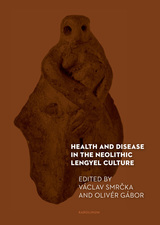
Health and Disease in the Neolithic Lengyel Culture
Edited by Václav Smrcka and Olivér Gábor
Karolinum Press, 2020
Lasting from around 4800 to 4000 BCE, the Lengyel culture helped usher in the Copper Age in Central Europe with the rise of mining, craft production, and the trading of copper and obsidian, in addition to larger-scale farming. In Health and Disease in the Neolithic Lengyel Culture, the authors investigate the migration of the Lengyel people as they moved west from their place of origin in modern-day Hungary to areas in what is now the Czech Republic and Poland. By drawing on research into the trace elements of strontium, carbon, and nitrogen found in human bone tissue, as well paleopathological analyses of congenital defects, this book proves that the Lengyel migration occurred in waves, providing important details about the changes in the diet, health, and mobility of a people who were crucial to the development of early European civilization
[more]
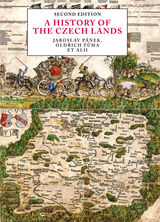
A History of the Czech Lands
Second Edition
Edited by Jaroslav Pánek, Oldrich Tuma, et al
Karolinum Press, 2016
Though the Czech Republic is a young nation, the areas within and just outside its modern borders boast an ancient and intricate past. A History of the Czech Lands provides one of the most complete historical accounts of this region to date. This history begins in the Neolithic era and follows the development of the state as it transformed into the Kingdom of Bohemia during the ninth century, into Czechoslovakia after World War I, and finally into the Czech Republic. Such a tumultuous political past arises in part from a fascinating native people, and A History of the Czech Lands profiles the Czechs in great detail, delving into past and present traditions and explaining how generation after generation adapted to a perpetually changing government and economy. In addition, the authors examine the many minorities that now call these lands home—Jews, Slovaks, Poles, Germans, Ukrainians, and others—and how each group’s migration to the region contributed to life in the Czech Republic today.
The second edition includes sixty new photographs and a new chapter detailing the transformation of this post-communist country into a member of the European Union. The only study in English of this scope and ambition, A History of the Czech Lands is essential for scholars of Slavic, Central, and East European studies and a must-read for those who trace their ancestry to these lands.
The second edition includes sixty new photographs and a new chapter detailing the transformation of this post-communist country into a member of the European Union. The only study in English of this scope and ambition, A History of the Czech Lands is essential for scholars of Slavic, Central, and East European studies and a must-read for those who trace their ancestry to these lands.
[more]
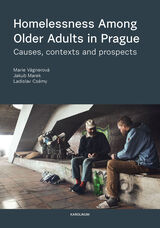
Homelessness among Older Adults in Prague
Causes, Contexts and Prospects
Marie Vágnerová, Ladislav Csémy, and Jakub Marek
Karolinum Press, 2020
Following their engaging study Homelessness among Young People in Prague, the authors of this book turn their attention to an older population facing the same issue, a very different situation since these older adults grew up under a communist regime where an obligation to work was enshrined in law and living on the street could result in a prison sentence. Based on three years of research, this book provides a slew of data-based statistical insights, analyzing the efficacy of relief provided by both the state and nonprofit organizations, detailing how the clients of such organizations rate their services, to what extent they accept assistance, and whether they believe it has helped them. More importantly, it features extensive interviews with real people, making it the first Czech book on this issue to present homelessness from the perspective of those who live with it every day.
[more]
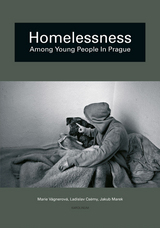
Homelessness among Young People in Prague
Marie Vágnerová, Ladislav Csémy, and Jakub Marek
Karolinum Press, 2014
The chronically homeless face a stark reality: lack of access to support systems, adequate shelter, and sustenance, with little hope for something better. For young people, however, life on the street may be merely a temporary stage in their lives. This book tells of homelessness among young people—the causes and their attitudes to the various problems they face.
Young homeless people describe a life in which they lose their privacy, the possibility to satisfy their basic needs, and, often, their self-respect in order to survive. The latter half of the book considers what happens when these young people return to society and how they navigate difficulties as they attempt to leave their past behind. Often, the struggle is not solely one of coping with the stigma of their experience; rather, they must face the legacies that linger long after their lives have turned a corner: drug addiction, criminal records, and accumulated debt.
Based on interviews with homeless people in Prague, Homelessness as an Alternative Existence of Young People paints an authentic picture of this social group and documents the often unseen social consequences of the transformation to capitalism from communism.
Young homeless people describe a life in which they lose their privacy, the possibility to satisfy their basic needs, and, often, their self-respect in order to survive. The latter half of the book considers what happens when these young people return to society and how they navigate difficulties as they attempt to leave their past behind. Often, the struggle is not solely one of coping with the stigma of their experience; rather, they must face the legacies that linger long after their lives have turned a corner: drug addiction, criminal records, and accumulated debt.
Based on interviews with homeless people in Prague, Homelessness as an Alternative Existence of Young People paints an authentic picture of this social group and documents the often unseen social consequences of the transformation to capitalism from communism.
[more]
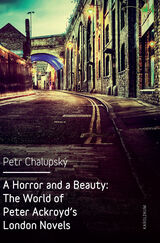
A Horror and a Beauty
The World of Peter Ackroyd's London Novels
Petr Chalupský
Karolinum Press, 2016
Peter Ackroyd’s writing is obsessed with the defining heterogeneity of London—its rich diversity of human experience, mood, and emotion, of actions and events, and of the tools through which all of this heterogeneity is represented and reenacted. But for Ackroyd, one of the foremost of the so-called “London writers,” this energizing heterogeneity also has a sinister side, largely originating outside social norms and mainstream pathways of cultural production. Touching on everything from occult practices to the plotting of radical groups, crime and fraud, dubious scientific experiments, and popular, dramatic forms of ritual and entertainment, Ackroyd contends that these forces both contest prescribed cultural modes and supply the city with its characteristic dynamism and capacity for spiritual renewal.
This idiosyncratic London construct is particularly prominent in Ackroyd’s novels, in which his ideas about the city’s nature and his connection to English literary sensibilities combine to create a distinct chronotope with its own spatial and temporal properties. A Horror and a Beauty explores this world through six defining aspects of the city as Ackroyd identifies them: the relationship between London’s past and present, its uncanny manifestations, its felonious tendencies, its inhabitants’ psychogeographic and antiquarian strategies, its theatricality, and its inherently literary character.
This idiosyncratic London construct is particularly prominent in Ackroyd’s novels, in which his ideas about the city’s nature and his connection to English literary sensibilities combine to create a distinct chronotope with its own spatial and temporal properties. A Horror and a Beauty explores this world through six defining aspects of the city as Ackroyd identifies them: the relationship between London’s past and present, its uncanny manifestations, its felonious tendencies, its inhabitants’ psychogeographic and antiquarian strategies, its theatricality, and its inherently literary character.
[more]
READERS
Browse our collection.
PUBLISHERS
See BiblioVault's publisher services.
STUDENT SERVICES
Files for college accessibility offices.
UChicago Accessibility Resources
home | accessibility | search | about | contact us
BiblioVault ® 2001 - 2024
The University of Chicago Press









